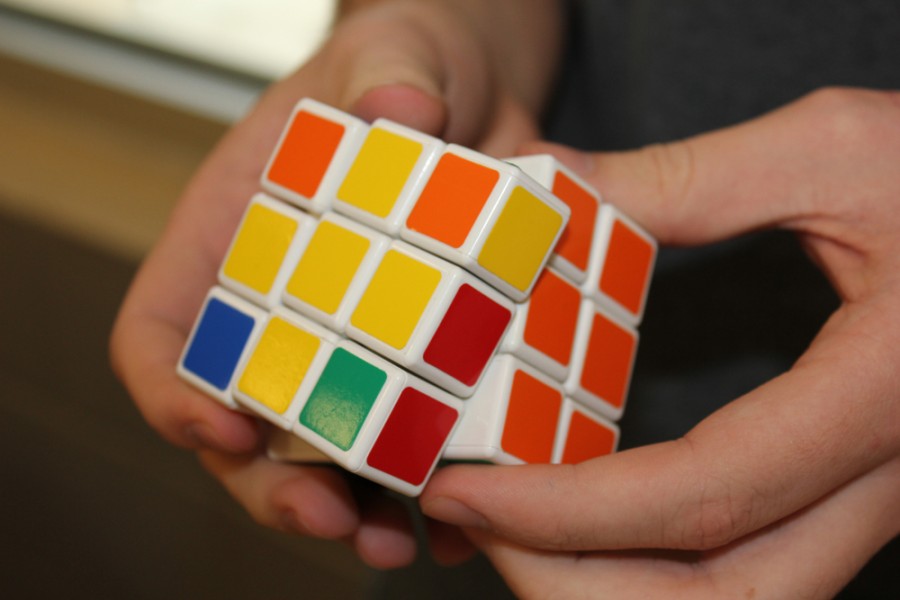CUBIK CONFUSION
October 30, 2014
All of us have been baffled by the simple object known as the Rubik’s Cube at least once, we probably all think that it is somewhat impossible to solve. Thankfully there are some people that can grasp this challenge with ease and show us all how this is done. I had the chance to talk to Daniel Franklin who has mastered the Cube and many other versions in short periods of time. He agreed to help us learn how this feat might be accomplished without giving away too many details so you still have a challenge. Some technical terms that you might want to familiarize yourself with are “face,” which refers to a side of the cube; “center-piece,” which are the pieces that don’t move on each face; “starting face,” which refers to the face that you began with; “opposite face,” which refers to the face that is directly across the cube from your starting face; “edge-pieces,” the pieces that only have two colors on them; “algorithm,” which is a sequence of turns on the cube to move a specific piece to a specific place; and “corner-pieces,” which are the pieces in the corners with three colors on each. Below is a list of basic steps that you will need to know if you plan on one day solving a Cube.
1. Start by picking a side and build on it.
2. First, you make a cross on the starting side. You also need to line up all the edge pieces with the colors they have.
3. Then, you fill in the corners.
4. Then, you orient your cube so that your starting face is either on the top or the bottom.
5. Then, you need to complete the second layer. This is accomplished by getting all the pieces in the middle of the cube into their proper place.
6. Then, you repeat what you did on your starting face, making a cross on the opposite face.
7. When getting the corners of the top face into their places, you have to use the specific algorithm. This will finish the top face, but the top layer will remain jumbled
8. Finally, the top layer is fixed. This is done by using the two algorithms designed for this purpose.
The only thing that you have left to do is learn how to move the pieces around efficiently. These steps will allow you to apply that knowledge at the appropriate time and place. So get out there and kick some cubic butt!
